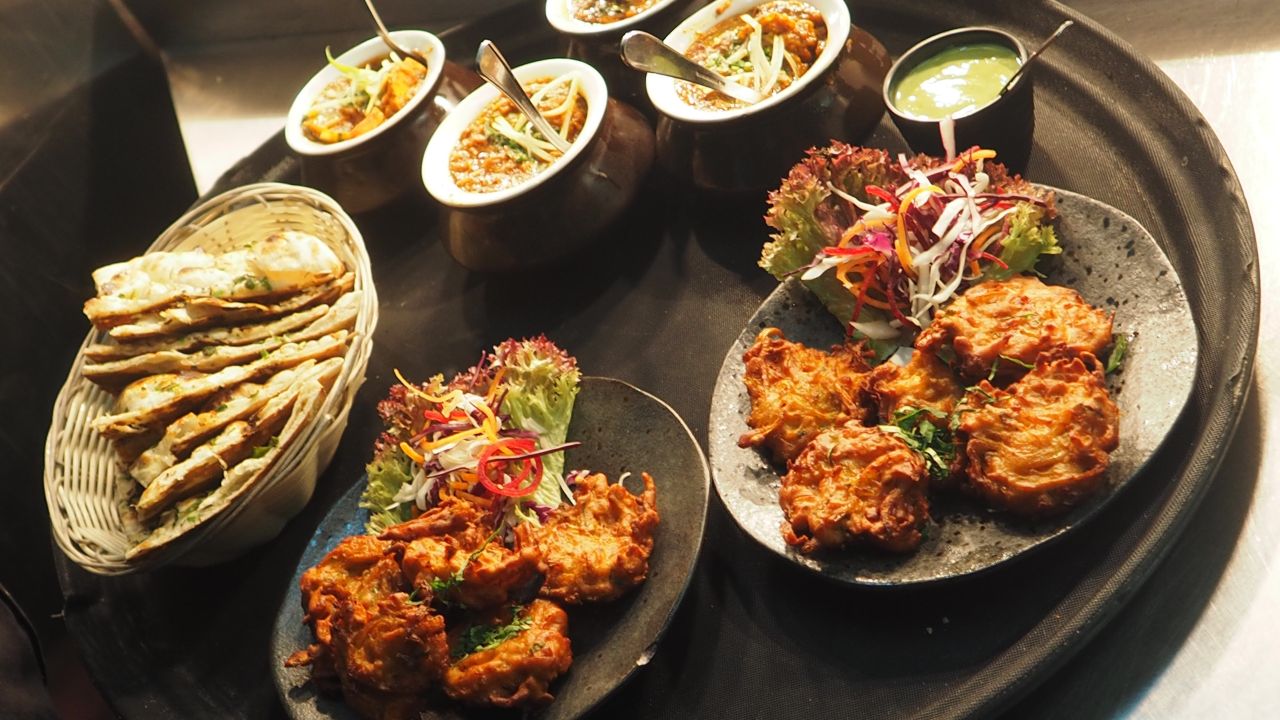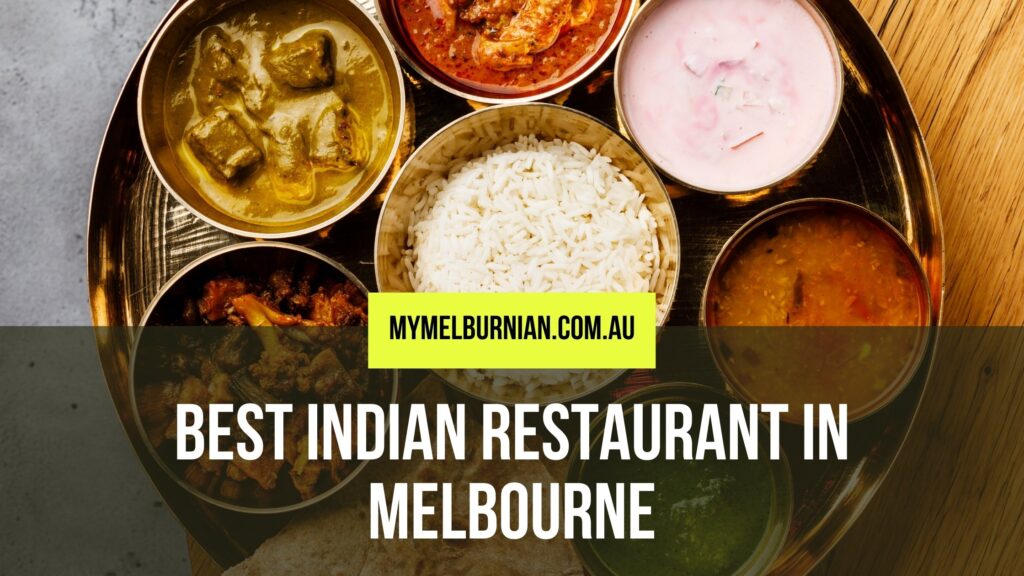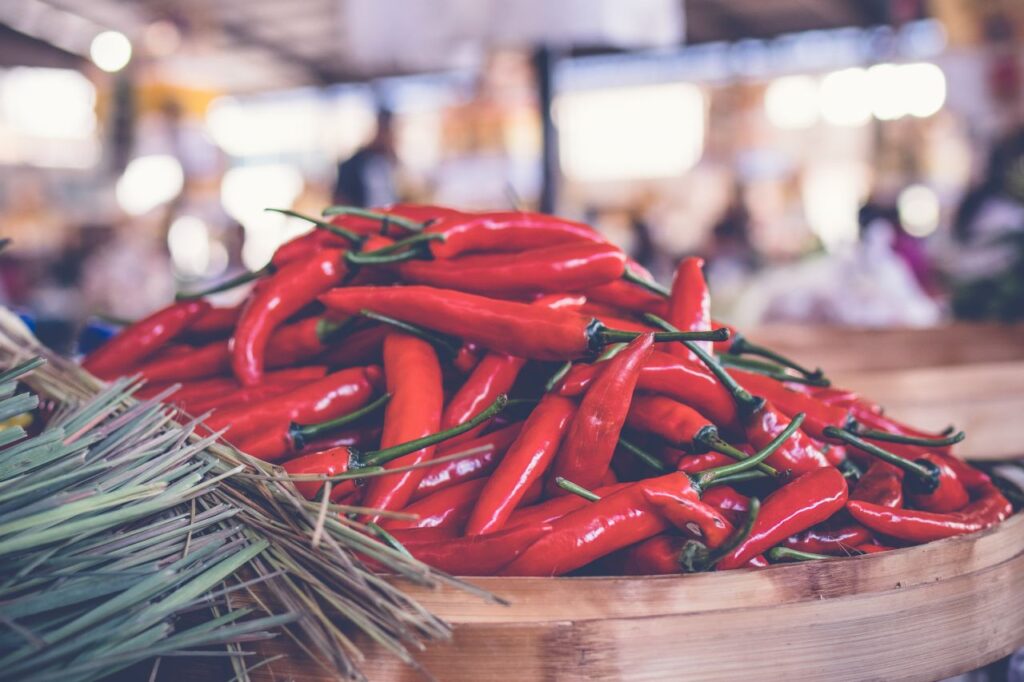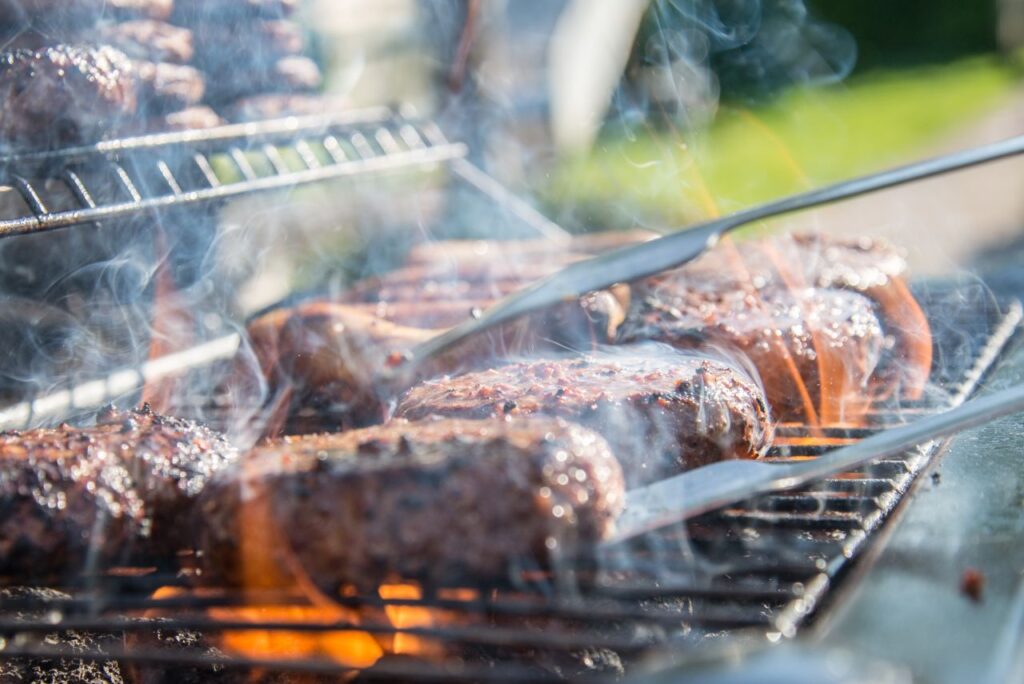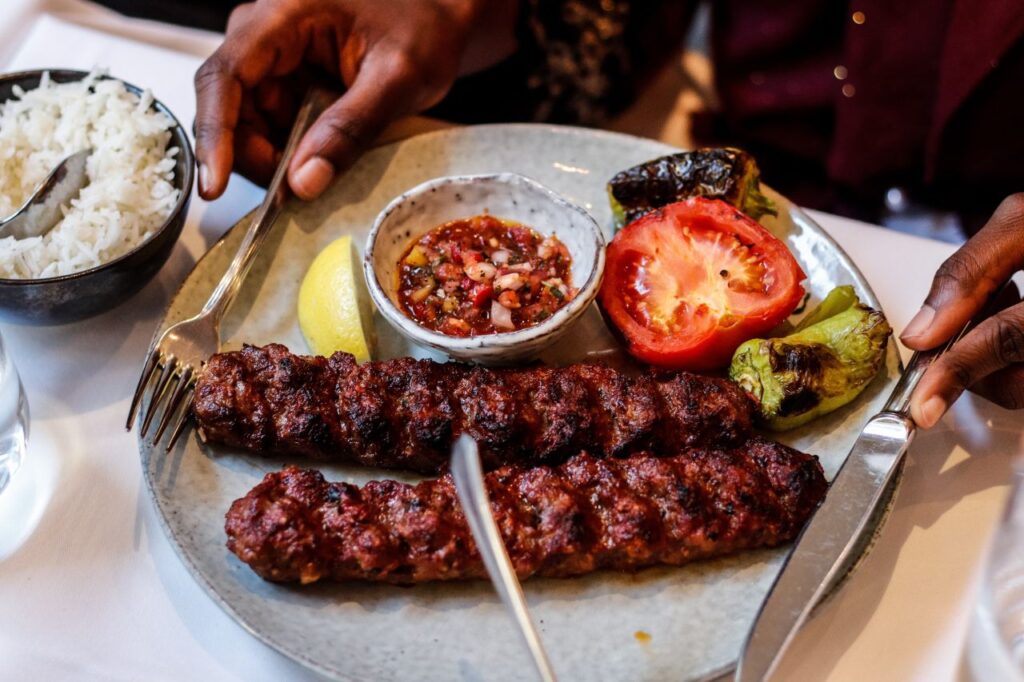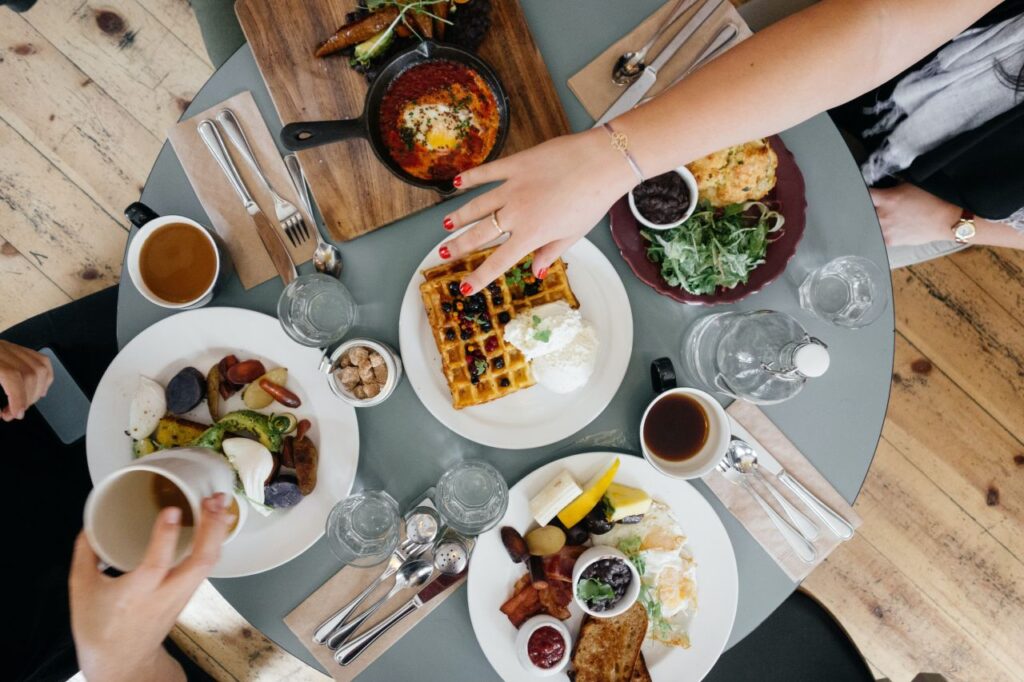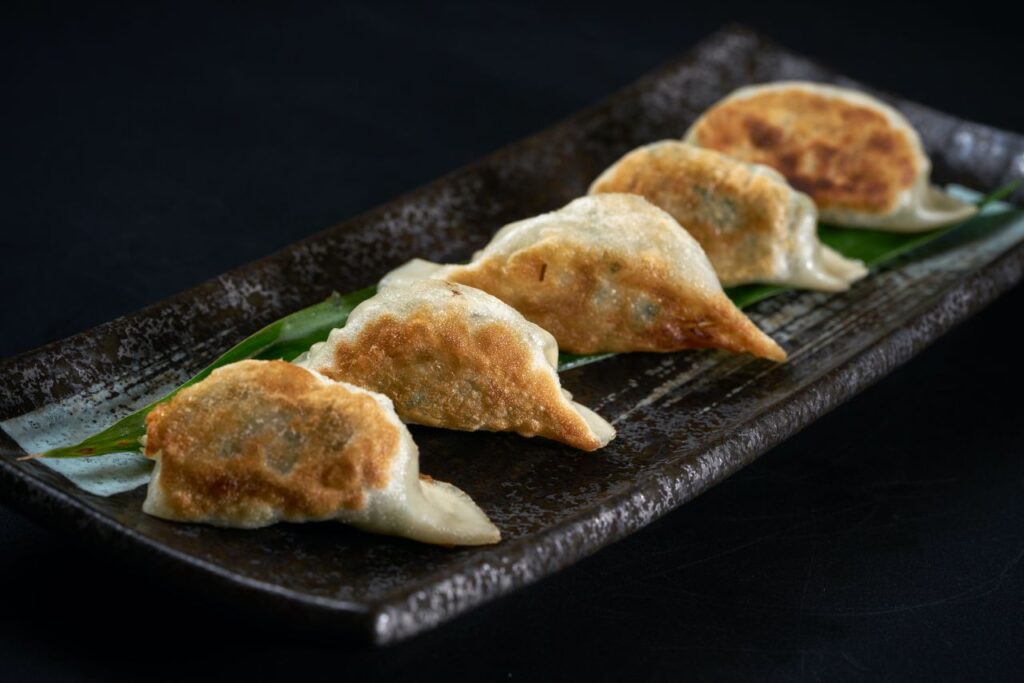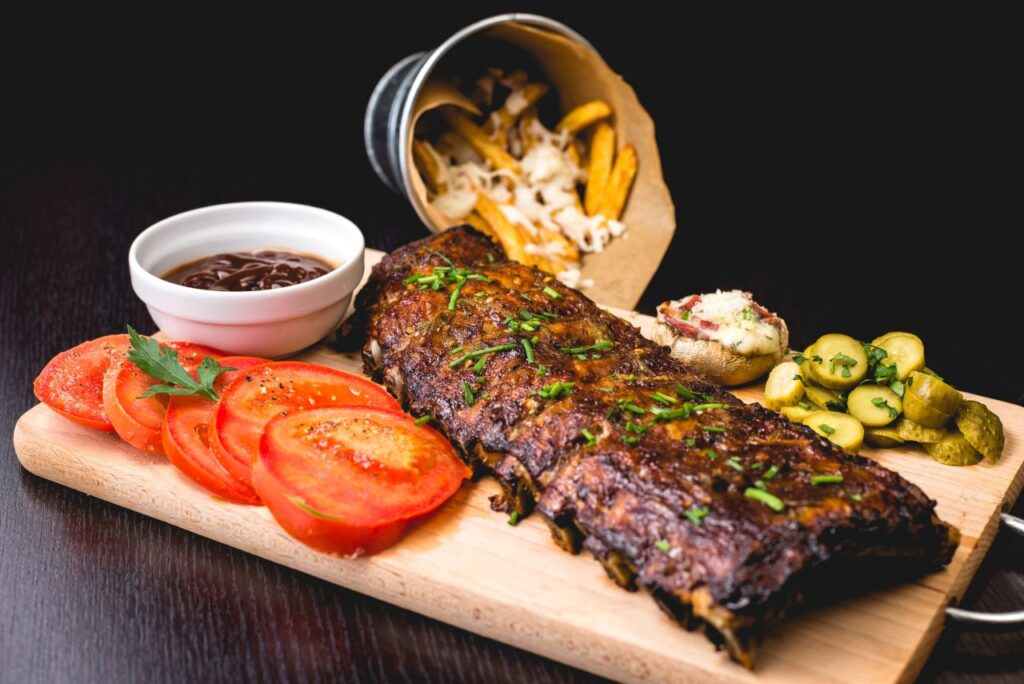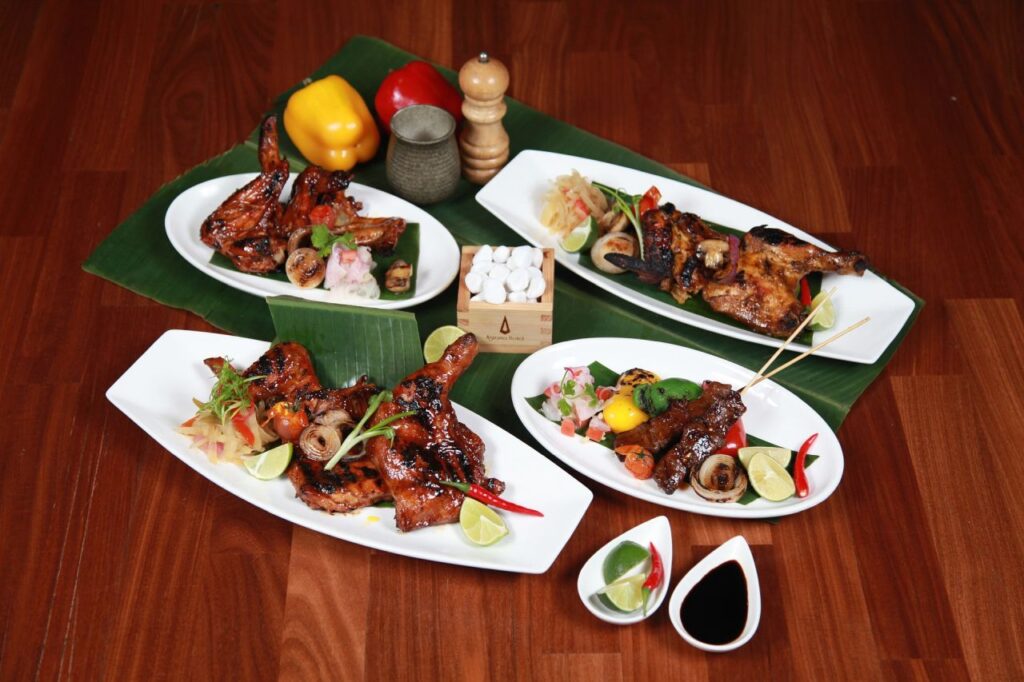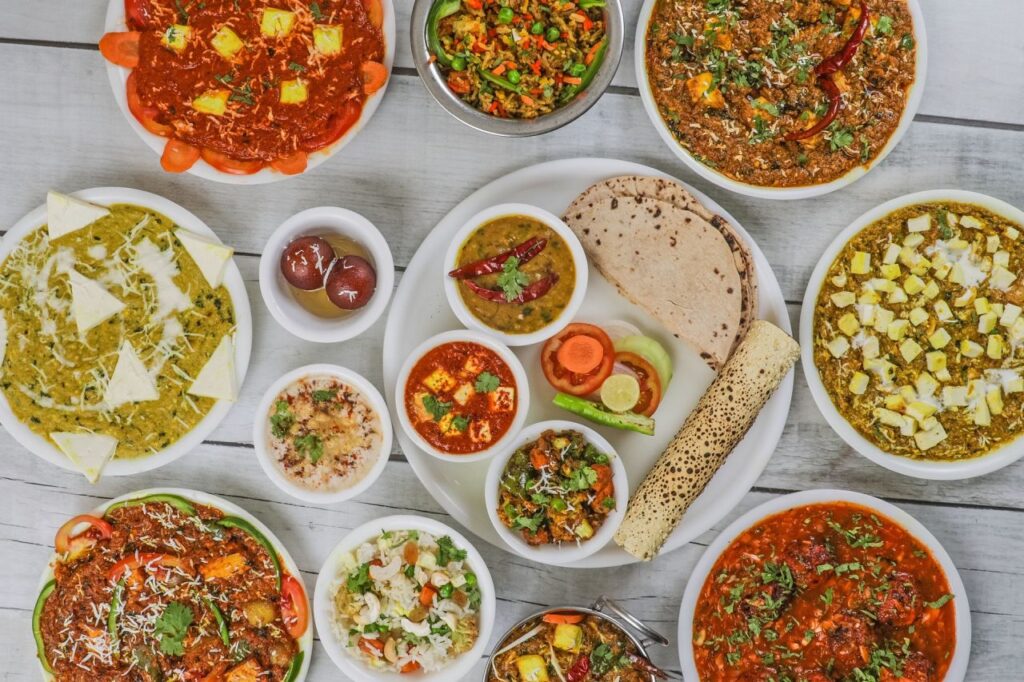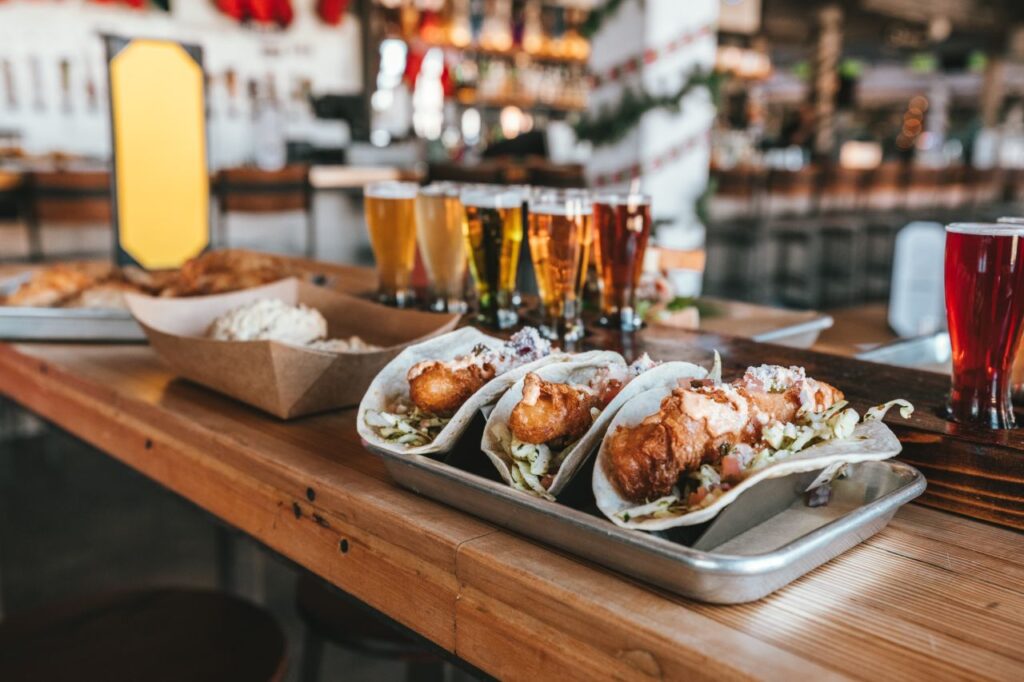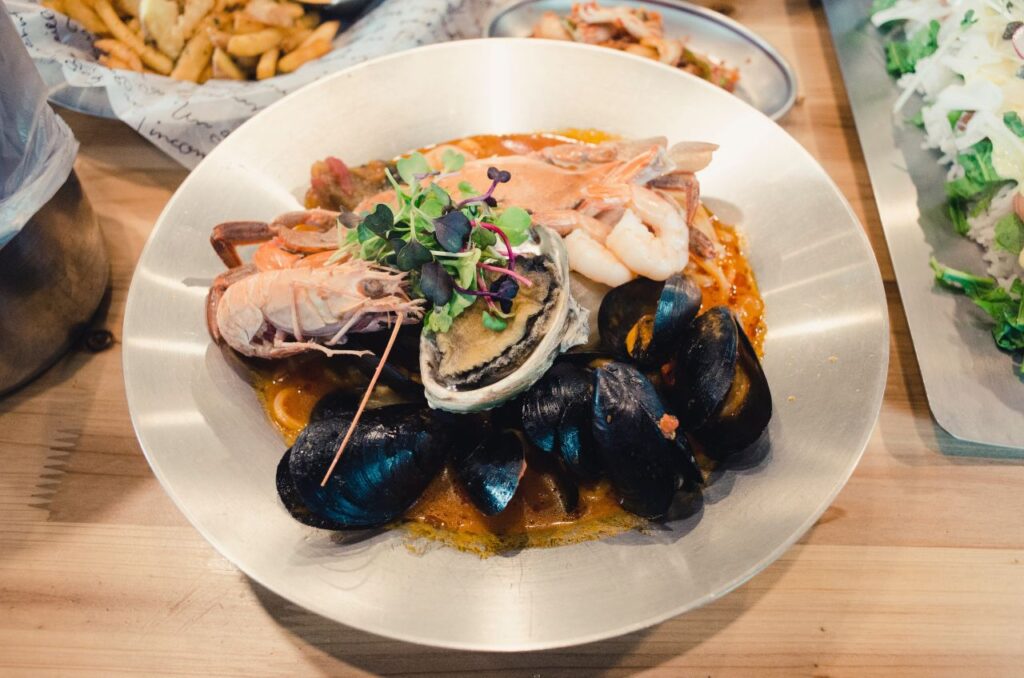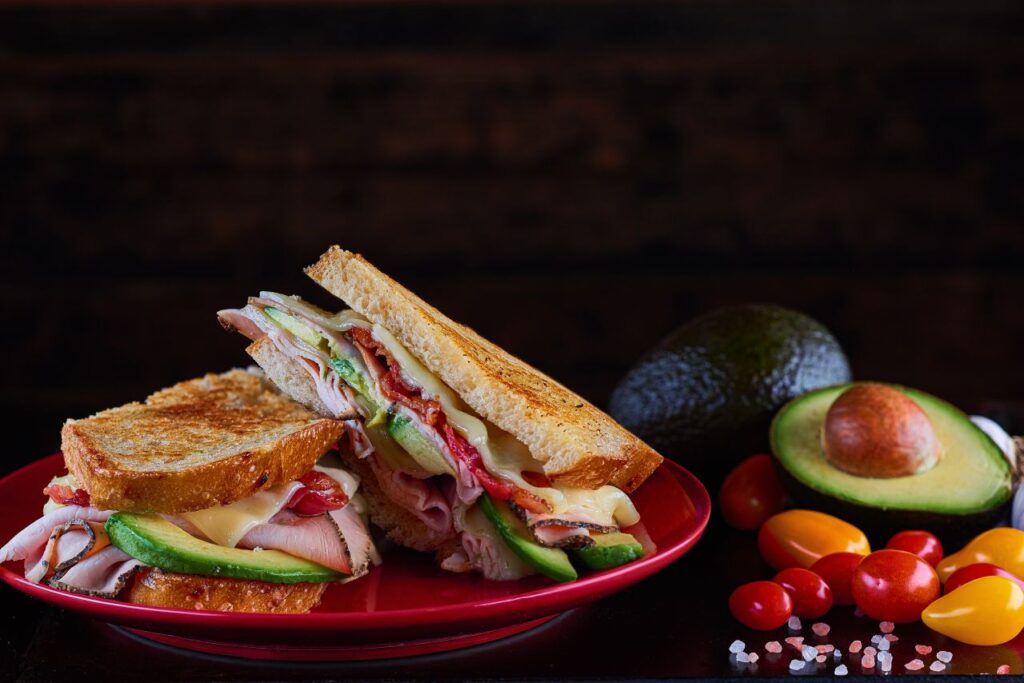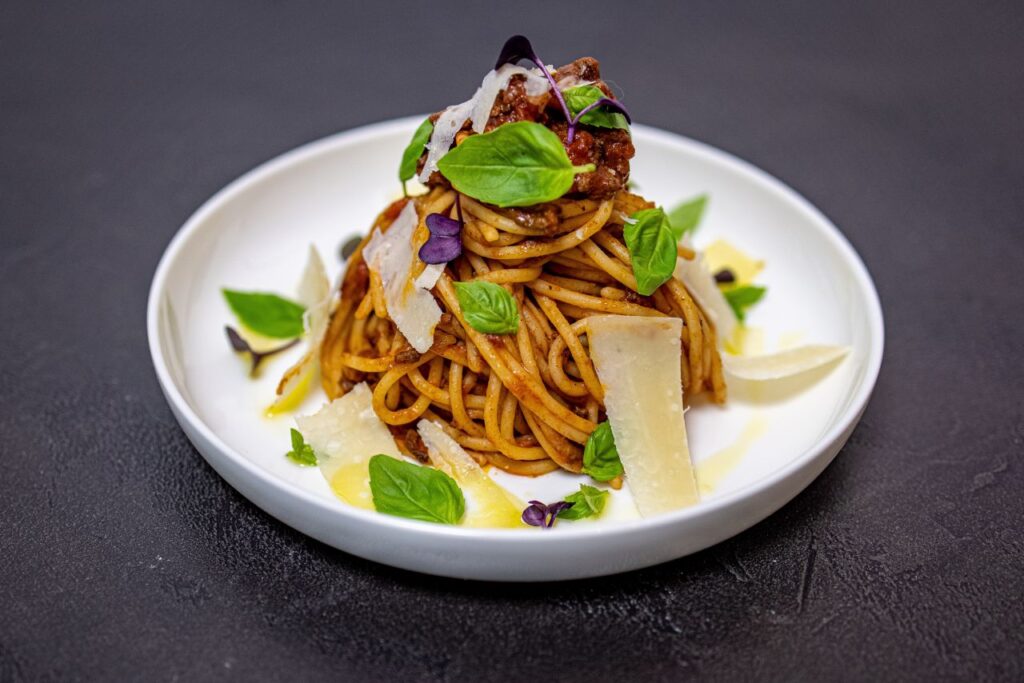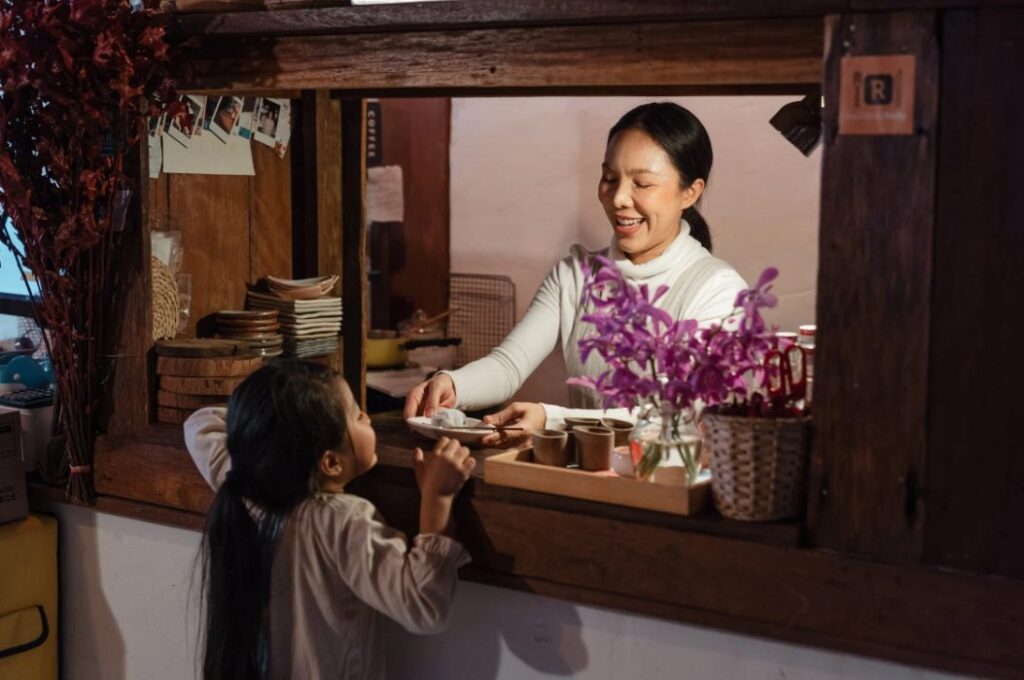If you're visiting Melbourne and aren't sure what to eat, this blog post will give you some suggestions for local favourites.
Australian cafes are widely recognised as among the world's best, and its coffee is a symbol of the country itself. Many have compared Melbourne's cafe culture to that of their home country, drawing inspiration from the city's flourishing café sector.
Thanks to its big immigrant population, Melbourne, Australia's second-largest city, offers a wide variety of delicious cuisines. In Melbourne, you may discover any type of cuisine, from cheap eats at roadside stands to five-star gourmet meals, all with their own distinct flavours and aromas.
Cafe cultures around the world can trace their roots to Melbourne's renowned cuisine. Equally, Melbourne is the origin of the "coffee and toast" mentality that permeates the world round-the-clock.
Cafe hopping has to be among the reasons you're in Melbourne or plan to visit. You won't leave Melbourne without being a convert to Melbourne's cafe culture or at least this must-try meal.
The city's high population density has resulted in a wide variety of dining options in Melbourne, from cosy neighbourhood cafes to posh fine dining establishments and even chain restaurants. The word "plethora" is actually quite modest. So, what are among Melbourne's most well-known dishes, exactly?
When trying to decide where to dine in Melbourne, I always feel dizzy from the overwhelming choice of excellent cafés and restaurants. Have you experienced similar emotions?
Melbourne's Famous Food
Perhaps more than any other Australian city, Melbourne has made a point of embracing and celebrating a wide variety of international cuisines.
Despite its reputation as a hub for coffee shops and progressive thought, visitors to Melbourne can still get their hands on "true blue Aussie staple foods," such as pork pies, at any of the city's many sporting events. Learn about some of Melbourne's finest dishes.
Whether you're a native or a tourist, the best way to experience Melbourne is to dive right in and allow your tastebuds guide the way. Put these 23 foods from Melbourne on your must-eat list.
Salt And Pepper Calamari
A classic dish from Cantonese cuisine given an Australian spin with salt and pepper, calamari is a seafood dish with a lot of history and tradition.
Calamari or squid is deep-fried in a salt-and-pepper flour batter, eaten with a salad and a peppery chilli sauce.
This dish's light and distinct flavour comes from the crunch and crispiness of the finished batter and the firm texture of the calamari rings, all of which are achieved with this basic preparation and flavours.
In addition, the fundamental spice of the batter complements its sweet heat and richness of a chilli sauce.
Lune Croissanterie
Lines wrap around the block almost every day that Lune Croissanterie is open, and the daily turnover rate for pastries is around midday, but are Lune's offerings up to par? To put it briefly, yeah.
Almost mathematically flawless, Lune croissants are baked in a temperature- and humidity-controlled facility to achieve their signature flaky, golden crispness and layers of flaky dough. When you consider your background as a race car engineer, the presence of a climate-controlled cube laboratory in the heart of their Fitzroy warehousing shop for optimal pastry-making doesn't seem so out of the ordinary.
Even yet, it's incredible to see how far the Lune team has come since their humble beginnings in Elwood.
If you want a multiple times almond croissant or one of the lemony curd cruffins, which are filled to the brim with tangy curd and topped with citrous sugar, you'll need to get there early.
The coffee service at Lune is so prompt and well-timed that it may frighten you if you're not a early riser. While you wait in line, one of the baristas will take your order for coffee from the espresso country and have it ready by the time your freshly baked croissant or cruffin is taken from the oven.
An option exists to avoid waiting in line. Pay in advance online for a three-course dessert banquet with unlimited coffee at the Lune Lab experience. You will be offered two special pastries in addition to Lune's standard croissants.
Fairy bread
Fairy bread, with its sugary taste and brightly coloured, festive appearance, is a classic at children's celebrations in Australia.
The easy-to-follow recipe calls for white bread, either sliced or cubed, some butter or margarine, and a generous helping of sugary sprinkles in a rainbow of colours.
This straightforward dessert is a staple in Australian culture, evoking warm feelings of nostalgia in adults while also being a kid-friendly joy. It's not uncommon to see fairy bread with a creative spin, such as a fun form, a fun colour scheme, or a fun icing.
Chicken Parma
Mozzarella and parmesan cheeses are melted on top of a meat cutlet and then the cutlet is deep fried. Although the original Parma dish originated in Italy, the Australian take on the dish is popular in eating establishments around the country. Chicken parma from Australia might include ripe eggplant, chicken, or other meats topped with a tomato-based sauce seasoned with Italian spices and melted cheese like mozzarella, much like its Italian inspiration.
Ham or prosciutto seasoned with complementary flavours is used in some dishes for an unexpected touch. Sandwiches, pies, pasta, and even chips and salads can all benefit from Parma. Parma is a popular staple in pub food, and Melbourne even has its own specialised chicken parma restaurant.
Anzac biscuits
Explore some of Australia's rich heritage. The Anzac biscuit, often called a "soldier's biscuit" or "Anzac tile," was a popular snack among sailors and soldiers on long voyages due to its low cost and high durability.
The Anzac biscuit's characteristic flavour is still created with traditional, primitive ingredients, despite the fact that it has gotten more flavorful and richer over the years.
For a snack that's both filling and delicious, try today's version of the traditional Anzac biscuit, which is made with oats, flour, almonds, butter, golden syrup, and baking soda. This is what gives it its distinctive flavour and allows it to be transported and preserved for lengthy periods of time.
Dim Sim
The China meat and vegetable wonton snack known as dim sim was invented in Melbourne's Chinatown, showcasing the city's unique blend of eastern and western culinary traditions.
The dumpling can be steamed, deep-fried, or barbecued, and it's typically topped with soy sauce and minced meat like pork, lamb, or chicken.
Traditional Chinese ingredients including shiitake mushrooms, cabbage, and water chestnuts are commonly used in restaurant and home cooking. Unlike traditional Chinese dim sum, however, these dumplings have a heartier flavour and a more substantial, doughy shell.
Australian settlers adopted the misspelling term for dim sim after seeing it on a menu.
Shandong Mama
To call her "Shandong Mama" is spot-on. If you've never tried Meiyan Wang's home-style Shandong cuisine, you're missing out (aka Mama). Tucked away in a passageway of stores, the dumpling heaven still serves customers some of the best doughy delicacies in town.
When we arrive, there are groups of friends & dates smooching in booths over giant laminated menus, and a prized plate of Time Out's 2013 Cuisine Awards is proudly displayed near the kitchen.
The recipe for Shandong Mama's signature dish, Spanish mackerel, comes from the Shandong seaside town of Yantai, and consists of hand-mixed soft, gingery crème held together through potstickers (which are unfortunately sold out in this occasion) or al chewy steamed dumplings.
Next, the largest serving of Melbourne dumplings ever. Dumplings made with squid ink are served in a pool of chopped garlic & extra virgin olive oil and look like soft strands of nylon.
Each one is stuffed with squid or chicken mince that has been pulverised, coriander, fresh basil, and unexpected pops of salmon roe.
Although the dumplings are king at Shandong Mama, the Yu Shiang aubergine is a great option if you're looking for something different. Each finger of nearly molten eggplant is wiped clean with white rice as it swims in a rich, sweet starch-loaded sauce carrying lots of garlic.
Now we'll go on to the next dish, which features julienned slices of cucumbers seasoned with mustard and more garlic. We're all here since garlic is obviously the main attraction. Little purple tube pancakes, which taste like pumpkin pancakes but are more doughy and sweet, are whisked over to our table by the attentive waiter. Once again, our chef is trying something new, and it turns out to be delicious.
After all is said and done, the best part about ShanDong Mama is probably that it recognises a good thing, and the consistency of the each dish is what makes it seem like you're visiting mum.
Pigs In A Blanket
deliciousness in miniature, The sausage-based meal known as "pigs in a blanket" is a popular appetiser, side dish, or hors d'oeuvre at bars, restaurants, and cocktail parties.
As an example, a cocktail frank might be encased in bacon for just a salty, savoury bite, or puff pastry to counteract the heavy, rich flavour of the meat with something more delicate and airy.
You can dip these tasty morsels in aioli, mayonnaise, or mustard, or try one of many other creative condiment combinations. There are recipes where cheese is used to stuff the little sausage.
Sunda
The Vegemite curry roti, if you please. By combining deconstructed roti with a curry sauce that has a Vegemite-umami backbone, Sunda has made each year's most audacious play for the minds and hearts of Melbourne.A
Plus, only 25 people per night are allowed to order it (hint: ask, do you have any roti to Vegemite curry left?") because it's off-menu secret. in addition, what you've got is genuine catnip for anyone with an appetite.
Don't assume that Sunda can only do one thing. Chef Khanh Quang, a (gasp!) Sydney transplant, is the restaurant's main attraction. He has taken the hot skillet fun of Malaysian, Indonesian, and Vietnamese cuisines and reimagined them using native Australian ingredients.
Until you get to the otak otak, which is traditionally a grilled salmon cake wrapped in banana leaf, the written form sounds slightly off. To spread on rice crackers, it sounds like the creamiest, richest fresh fish parfait with a hint of curry and a garnish of finger lime, chilli slivers, and picked meat.
Or the zingy, golden-domed flawless of the rendang bread roll, which not only serves as an example that pretty just about every culture has its own version of such a meat pie, but also demonstrates that Malaysian beef roti does very well when smushed into a fluffy starch den with a brave swipe of fermentation process chilli sambal or a refreshing hit of marinated radish on the side.
Fremantle octopus is put thru a modern centrifuge by Nguyen, with the charred cephalopod going head to head with the banging rich ripeness of shrub strawberry and lemongrass sambal.
Try his egg noodles, which are smothered in XO sauce and accentuated with pepper berry as well as mined with a generous helping of salty chicken sizzle that will send your cholesterol through the roof.
The menu is only part of what makes a restaurant great. Sunda has emerged fully formed with one of the most intriguing wear of 2018 (the best phrase is construction site-chic; this same combination of red walls and formworks giving the impression of having a meal in a gallery space), and the savvy team of employees are armed and dangerous with the a wine list that sways naturally without even being obnoxious about it.
Sunda has broken through the barriers, demanding and receiving our unconditional affection. Let's raise a glass of that funky rosé to its promising future.
Spag Bol
Spaghetti Bolognese, also known as spag bol, is an animal flesh sauce typically used to top lasagne or pasta and is based on traditional Italian cooking.
Sautéing, braising, and a homemade tomato sauce of celery, shallots, and cucumber with chopped pork or beef are all used in the Italian version.
Succulent Australian beef or veal, as well as mushrooms, truffles, and herbs grown in Australia, are used in this unique take on the Italian classic.
Vegemite
It's either immensely satisfying or thoroughly repelling. Like its British counterpart, Marmite, Vegemite is indeed a yeast spread used in Australia and the United Kingdom on toast, crumpets, cracker biscuits, and as a having to fill for pastries. In Australia, it's common to eat it for all three meals of the day.
Though both contain vegetable extract, Vegemite is a thicker, savoury brown paste while Marmite is lighter in colour and flavour. The beef bouillon-like saltiness, bitterness, and maltiness that it has is a bummer. Salad greens, avocado, or tomato are great complements because their mild flavours help to tame the bold taste.
Butchers Diner
Exactly one day's worth of time. Con Christopoulos keeps the doors to his new CBD business wide open all day, every day. It's a great justification for eating dinner late or breakfast steak. Now you can add Butchers Diner to the list of late-night hotspots in Melbourne's central business district.
The butcher at Butchers Diner is a longtime member of the European Collective who has been responsible for dismembering animals and producing cured and aged meats for restaurants like the City Liquor Store, the European, Kirk's, and the French Saloon.
Even though meat is featured heavily on the menu, it is not quite as exploitative as it may appear at first glance. When you walk in, your eyes will be drawn to a cabinet that takes up the entire wall and is stocked with various types of hanging meats.
Although it is standard fare for the rest of the restaurants, the diner's offering stands out as particularly appealing. The menu has a decidedly European slant, but it also reflects influences from the United States, Japan, and China. Burgers made from the day's cuts start at $9.50, and there's also Japanese fried chicken with sesame paste and Kewpie mayo and pickled daikon for $12.
Offal skewers (serves 2) are $7.50 and can be chewy, bouncy, or ironic (and are served medium-rare to medium, depending on the cut), and you can also get a soft, spiced mansion blood sausage as well as curried egg bap (serves 2) for $10. The daily each special changes, but it might include things like confit duck with steamed vegetables and a chilli sauce jam, or it might be Carolina-style barbeque pork with'slaw and cornbread.
While you can enjoy any of these on your own, we recommend bringing a few mates and ordering from all over the globe.
However, meat-free treats are sprinkled throughout. For $6, you can get a classic ham and cheese toastie, for $10, you can get falafel on a daily salad, for $8, you can get wood-fired seasonal vegetables, for $10, you can get a crispy tofu noodle salad, and for $10, you can get American-style vegan hash that you can customise with various toppings. They have also recently installed a 24-h, all-vegan dispenser with items all under $10, including coconut yoghurt, a variety of salads, spirulina studded granola bars, cold-pressed juices, and raw chocolate, in case none of these strike your fancy. What you didn't expect once you heard about with this 24-hour diner.
Cash is required at the time of ordering, and an ATM has been installed right outside the entrance in case you've managed to get out of the house without withdrawing any money. Food is delivered on plastic or stainless steel trays.
There is a strong preference for using one's hands when eating, so this is not the best spot for a business lunch. So, listen up, workplace workers: all gifts take away, 24 hours a day, seven days a week. Alcohol is offered in the form of carefully curated craft beer tinnies ($8.50–$12.50) or premium ½ wines ($18–$60). The prices are more reasonable than smashable, so you probably shouldn't go there to pound home a few after a live show if it's rent week. Coffee is available for $2.50 for a filter serve, should you need a pick-me-up.
Even though it's one of Melbourne's 1st 24-hour food shrines, it still experiences the same crush of customers during prime mealtimes as any other restaurant. Despite what the name might imply, this is not a meat-only establishment, and the prices are very fair.
Kangaroo
Kangaroos are plentiful in very many parts of Australia, are low in fat as well as completely methane free, and their meat is remarkably tender and great just on BBQ, so it is frequently used in traditional dishes.
Kangaroo meat is naturally low in lipids and tall in iron, and it is also tender and sweet. You can grill it with bold flavours such as garlic, juniper, chilli, rosemary, plum, red currant, and orange.
Kangaroo meat is low in fat and, as a result, can easily become tough and dry during cooking; therefore, it is best served rare to medium.
Pie Floater
This is, as strange as it may sound, pie in soup. Traditional Australian cuisine, such as the pie floater, fuses the cooking techniques of early British settlers with those of indigenous Australians. An iconic dish from the English culinary canon, potato leek soup with meat, meets a classic dish from Down Under to create a one-of-a-kind meal.
Tomato sauce, salt, pepper, mint sauce, or malt vinegar are common ways in which chefs modify the taste of the blue boiler pea soup in which the pie is served.
Meats such as meat, deer, rabbit, poultry, and even kangaroo are all options for the meat pie's filling, with each contributing to a leaner, heathy meal and milder flavour.
The American Doughnut Kitchen
You'll understand why people have stood in line for American Doughnut Kitchen's warm jam bliss bombs for decades after just one bite. This family company has been going strong since the 'fifties, and it's not uncommon to see a boundary of doughnut fans outside the blue as well as white van on market mornings.
The recipe hasn't changed in nearly seven decades, so the workers are busy slicing dough, frisbeeing into the fryer, and sprinkling it with sugar.
The short time between when they are removed from the fryer and when you bite into them makes these doughnuts exceptional. And then there's the unexpected molten red groove that could ruin your professional attire.
Both the doughnuts and coffee at the American Donut Kitchen are genuine American standards. For many years to come, may they elevate the Vic Market.
Bash
If you want the best fine dining in all of Melbourne, look no further than Bacash in South Yarra. Michael Bacash, owner of a seafood restaurant, lives up to the reputation of his establishment by providing an excellent menu and friendly, attentive service. Because of this, bash has been praised by The Age Good Food Guide every year from 2006 to 2012, and it still manages to impress.
Conclusion
Melbourne's food inspired cafe cultures worldwide. Dining options are plentiful due to the city's high population density. All food has its own taste and smell, from roadside vendors to five-star gourmet meals. Melbourne loves international food. At the city's various sporting events, visitors can still receive "true blue Aussie staple dishes." Lune croissants are made in a temperature- and humidity-controlled facility to create their golden crispness and layers of flaky dough.
Content Summary
- This blog article offers local food recommendations for visitors to Melbourne.
- Australia's coffee is a global icon of its top cafes.
- Melbourne's café culture has inspired many to compare it to their own.
- Melbourne, Australia's second-largest city, has several wonderful cuisines due to its massive immigrant community.
- From roadside stands to five-star restaurants, Melbourne has a variety of cuisines with distinct flavours and fragrances.
- Melbourne's cuisine inspired global cafe cultures.
- Melbourne also invented the global "coffee and toast" attitude.
- Cafe-hopping must be one of your reasons for visiting Melbourne.
- Melbourne's cafe culture or this must-try dinner will convert you before you leave.
- Melbourne features everything from cosy neighbourhood cafés to sophisticated fine dining and chain restaurants due to its high population density.
- Melbourne has so many great cafés and restaurants that we get dizzy trying to choose one.
- Melbourne Food Melbourne celebrates international food more than any other Australian city.
- Melbourne's sporting events offer "true blue Aussie staple meals" like pork pies, despite the city's reputation for coffee shops and progressive philosophy.
- Melbourne is best explored by following your tastebuds, whether you're a local or a tourist.
- Pepper Calamari Calamari, a Cantonese dish made Australian with salt and pepper, has a long history.
FAQs About Melbourne’s Famous Food
There is no authentic Melbourne dish or cuisine. Rather, the city's food options are limitless because it is a multicultural melting pot. Food is a portal into the culture, and Melbourne's vibrant immigration history remains at the forefront of its culture partly because of its undeniably international cuisine.
Melbourne's food is a cause for celebration for many of us – we have ready access to a wide variety of high-quality foods all year-round, which we enjoy at home and in a diverse and thriving scene of cafes, restaurants, bars, and other outlets.
Melbourne is Australia's culinary capital and has the numbers to prove it. Get the facts behind Victoria's love of all things food.
- Melbourne has more than 3,500 restaurants and serves up cuisines from more than 70 countries.
- Melbourne Food and Wine Festival is the largest of its kind globally. The festival hosts more than 200 events and attracts around 300,000 people each year.
- Victoria is home to 21 different wine regions, more than 800 wineries, 600 cellar doors, and 30 craft breweries.
- On average, Melbourne imports 30 tonnes of coffee beans each day – enough to make 3 million daily cuppas.
- The volume of Melbourne's coffee-bean imports has increased by around 780% in the past decade.
- An estimated 2000 farmers sell their produce each month at open farmers markets across Victoria.
Best Foods in Melbourne You Must Try
- Salt and pepper calamari.
- Fairy bread.
- Chicken Parma.
- Anzac biscuits.
- Dim sim.
- Pigs in a blanket.
- Spag bol.
- Vegemite.
- Lamb Roast.
- Banh mi.
- Meat pie.
- Gozleme.
- Hot jam doughnut.
- Pippies in XO.
- The magic.
- Capricciosa pizza.


